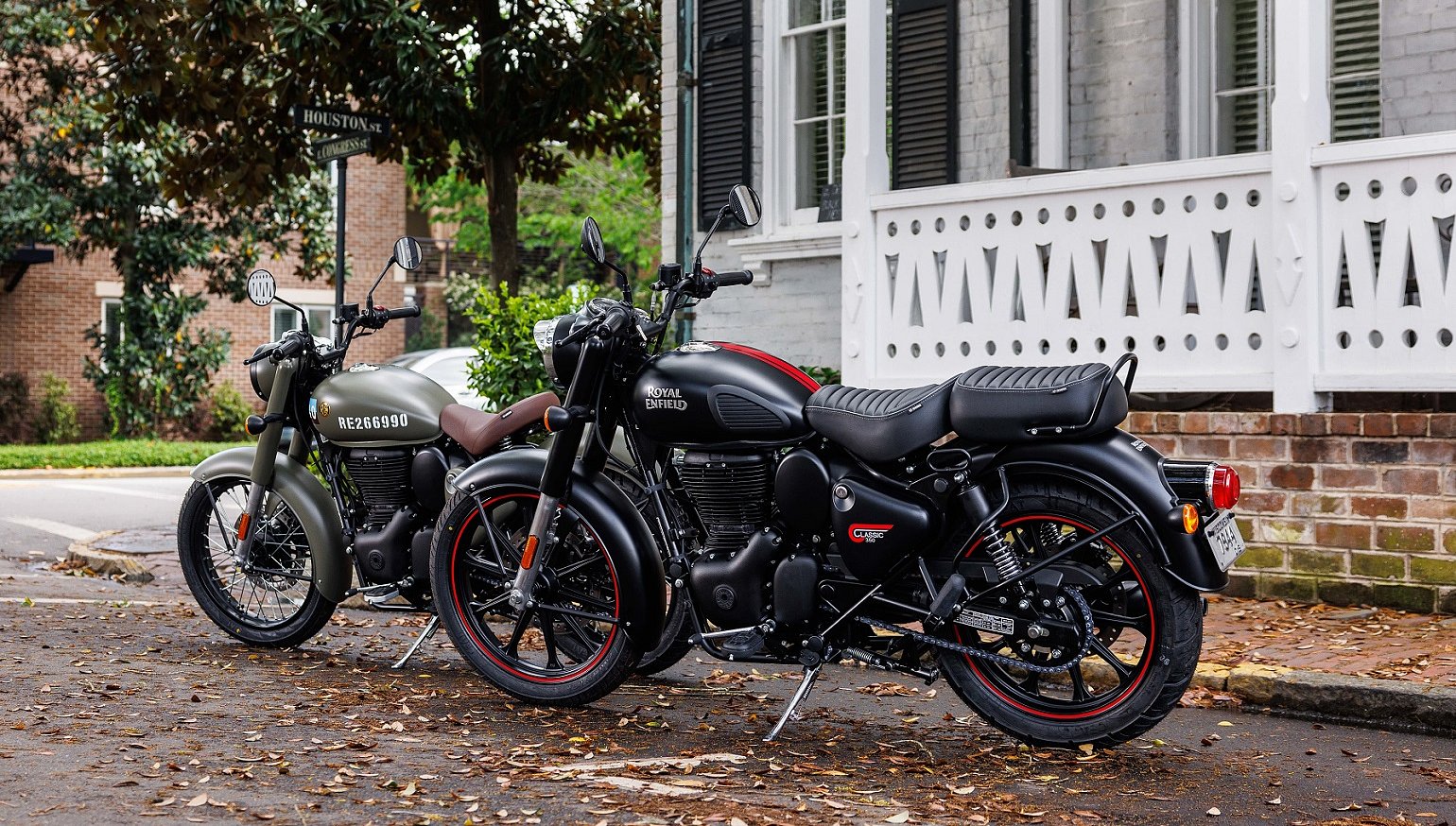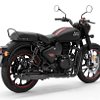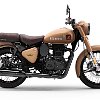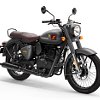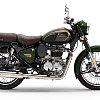I'll state my bias right up front: Of course I ride motorcycles for fun, but I also demand they be practical. Motorcycles have been my main form of personal transportation for decades. For me, they aren't weekend toys, fashion accessories or Instagram props. They have to work to earn their keep.
So when I went to Savannah, Georgia, this week, where Royal Enfield was unveiling its very historical and retro-looking Classic 350 in a very historical city, I wasn't sure where I was going to end up. Royal Enfield has sold more than three million Classics around the world, and most of them are definitely earning their keep as working transportation, but not many are on U.S. roads. Sure, a solidly built (meaning not light), 20-horsepower thumper works great in India, where speed limits are actually lower for motorcycles than for cars, and it's fine for city use anywhere. But would the revised thumper convince me it could be a versatile and capable choice for a beginner rider in the United States who's looking for a stylish, traditional bike? Or would it just be a fun second motorcycle, good for a Sunday ride on quiet country lanes or putting around town and convincing the uninformed that you did a spectacular job restoring an old post-World War II bike?
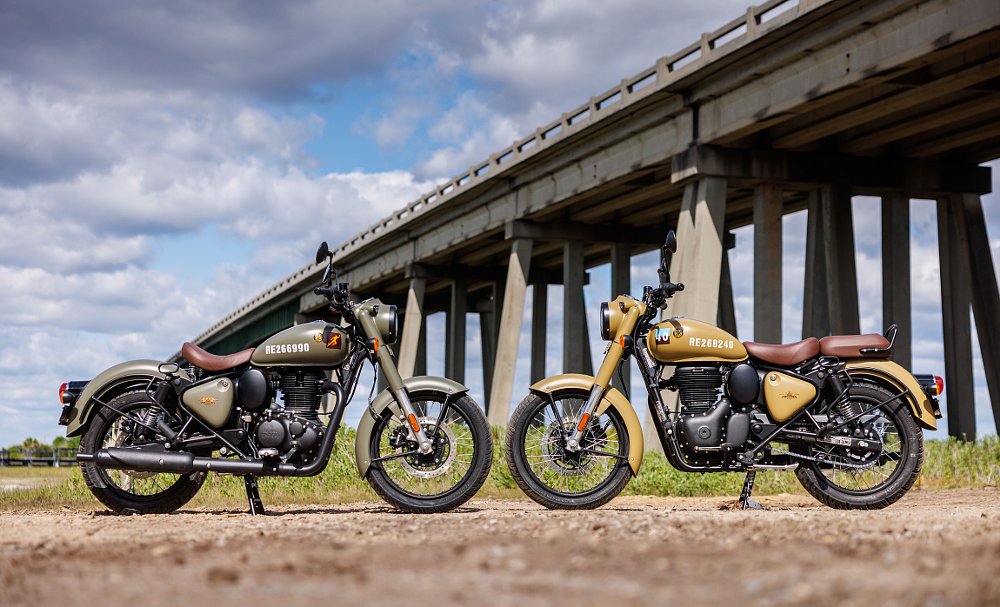
As usual with me, the answer is not a simple "yes" or "no." But the Classic 350 is a better motorcycle — and on an emotional level, in many ways a more appealing motorcycle — than I expected.
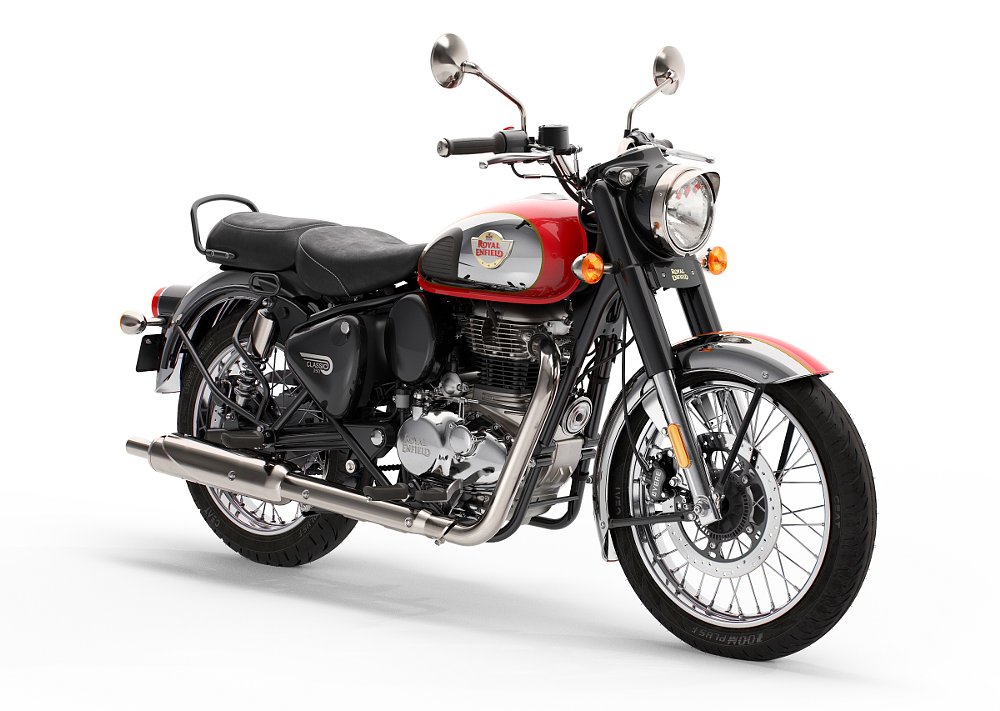
Royal Enfield Classic 350: The facts
Much of the Classic 350 is the same or similar to the Meteor 350 Andy reviewed earlier. At the heart is a completely revised 349 cc air-cooled, two-valve, vertical single. It's the classic thumper configuration but updated with fuel injection and a counterbalancer to keep the thumping in the range of "character" and not "annoyance." Just as the stylists worked to make the Classic 350 true to post-war aesthetics, the engineers wanted it to still be a thumper. Just with a bit more 21st-century polish.
"They kept the thump," said Krishnan Ramaswamy, president of the Americas Region for Royal Enfield.
Along with the upgraded engine you get disc brakes with Bybre calipers at both ends and ABS is standard. Just about everything is metal. About the only plastic parts of any size I could find were the two side covers, which lock with the ignition key. The left side covers the air filter (easy maintenance) and the right one covers the battery and the small tool kit.
The locking fuel tank cap looks like it's the kind that comes off but it's actually hinged. The rear seat is removeable if you want to go with a solo look. Another feature I really appreciate is the centerstand, and those passenger grab handles on both sides also come in really handy for the rider when putting the Classic 350 up on the centerstand. Unlike some bikes, you don't have to be a weightlifter to achieve the move.
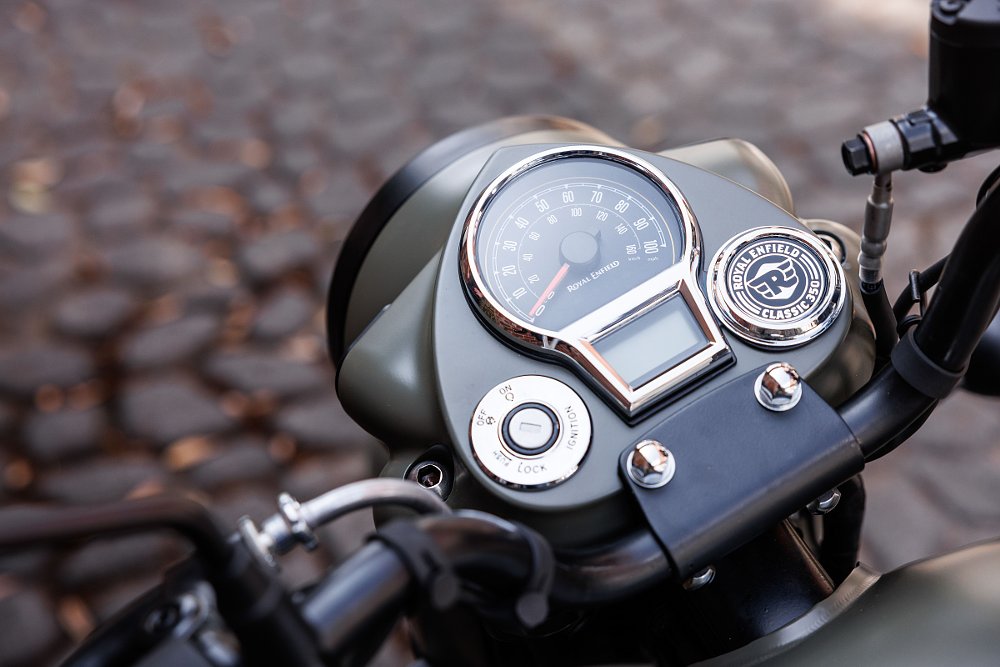
The instruments consist of a single round gauge with an analog speedometer and a small LCD screen that displays a fuel gauge and your choice of either the odometer, one of the two trip meters, or a clock. That's it, except for an "ECO" notice that flashes on when you're not using much fuel, plus the usual warning lights.
These days, a lot of the work of testing a new motorcycle is trying to evaluate its electronic rider aids, often in a short amount of available time. It's a little simpler with the Royal Enfield Classic 350. It comes standard with three ride modes. The basic setting is the "ride your own bike" mode, with no electronic intervention between the rider's throttle, brake and steering inputs and the machine's response. Then there's the "park your motorcycle" mode, which can be selected by the rider when the motorcycle is stopped by turning off the key and deploying the sidestand, for times when you don't feel like riding. And third is the "crash your motorcycle" mode for those occasions when you choose the base setting but don't execute your responsibilities sufficiently and there's no electronic nanny around to save you.
But seriously, what did you expect? Cruise control and a quickshifter and an IMU informing the ECU so it can modulate traction control based on your lean angle? Much of the Classic 350's appeal is that it keeps things simple. It's hard to find anything on this motorcycle that even the curmudgeons among us would call "gimmicks."
"The bikes are everything you need and nothing you don't," is how Ramaswamy put it.
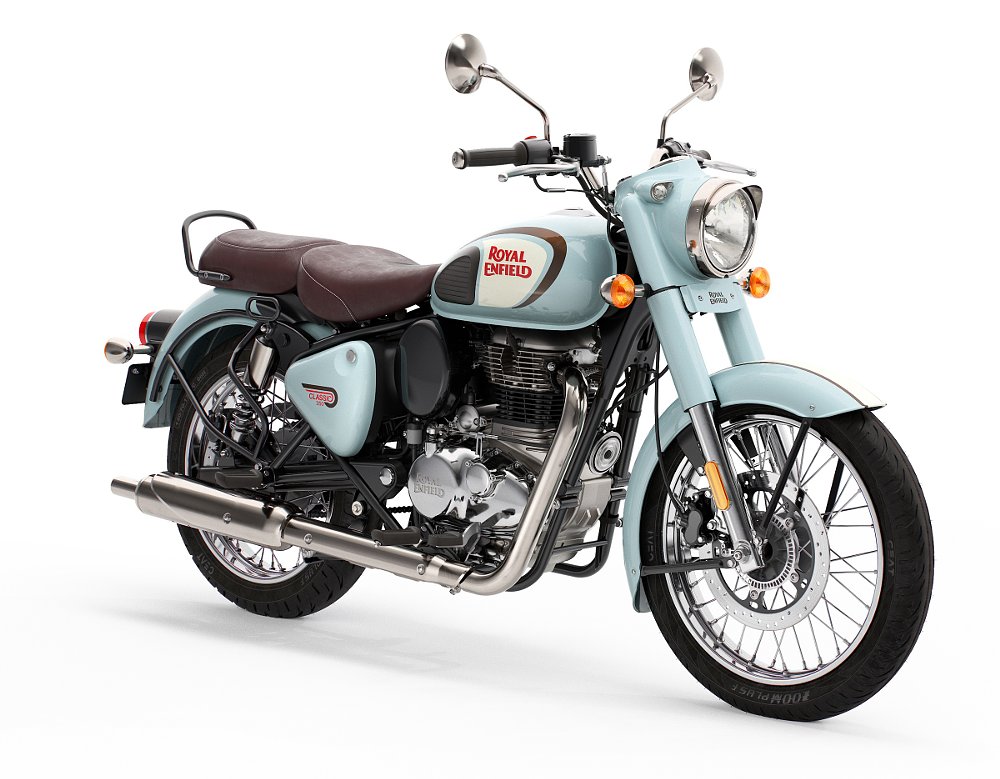
And "bikes" is definitely plural. Royal Enfield is planning to have no fewer than nine options available by later this year. The Classic 350 is available now in the Dark Stealth Black and Dark Gunmetal Grey colors for $4,599. These versions come with alloy wheels and tubeless tires. Also out now are two military-styled Signals models that commemorate Royal Enfield's 65 years of working with the Indian military. The Signals Desert Sand and Signals Marsh Grey models are adorned with 1950s-style military graphics and spoked wheels and also cost $4,599.
More models are coming later this year. Three Halcyon models in Forest Green, Halcyon Black and Halcyon Blue will be even less expensive at $4,499. Two other models, with special badging and mirror finishes called Chrome Red and Chrome Brown will cost $4,699. At a time when other manufacturers seem to want to paint all their new models gray, it's refreshing to see Royal Enfield offering nine color choices (even if two of them are still gray).
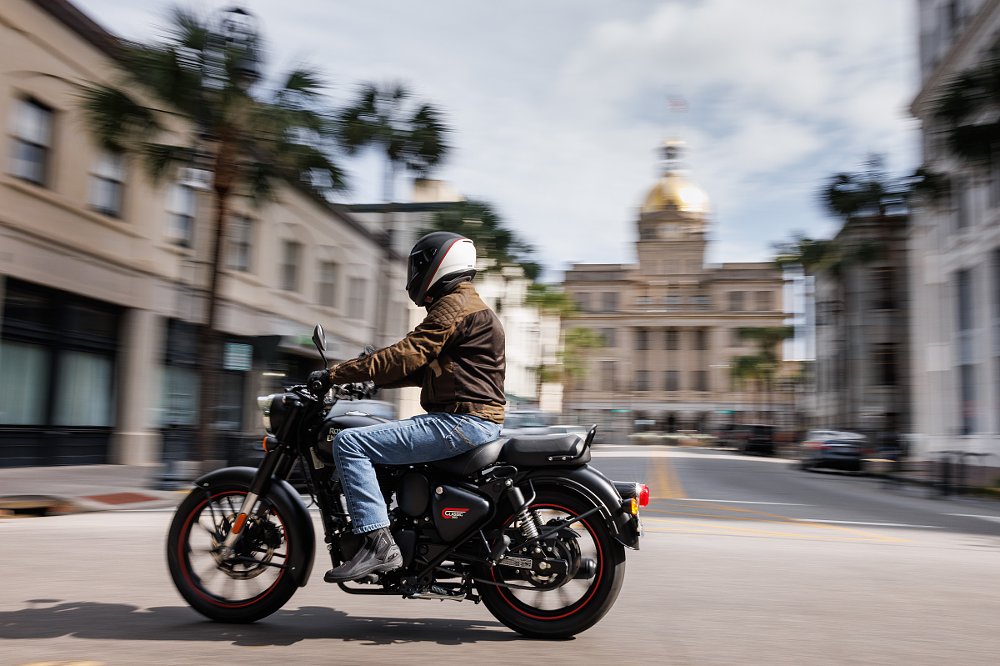
Riding the Royal Enfield Classic 350
With centuries of history, stately homes, and live oak trees dripping with Spanish moss, Savannah provides an attractive and appropriate backdrop for a retro motorcycle. What the flat coastal plain of Georgia and South Carolina does not offer is a lot of what we typically think of as good motorcycle roads. In our day of riding the Classic 350, the best sweeping turn we saw was the off ramp of the Talmadge Memorial Bridge across the Savannah River. That, plus the fact that I only got in 79 miles of riding, due to the demands of breakfast, lunch, dinner, and photo passes, means this is merely a first impression, not a full review.
But, as stated above, first impressions were more positive than I expected.
The fuel injection means warmup is push-the-start-button simple and I was pleased to see that throttle response was free of any jerks or lurches. That was important as we started off by circling through the old streets of the city, where surfaces ranged from asphalt to cobblestones. Clutch pull was moderate. The smooth throttle response continued once we got up to highway speeds across the bridge into South Carolina.
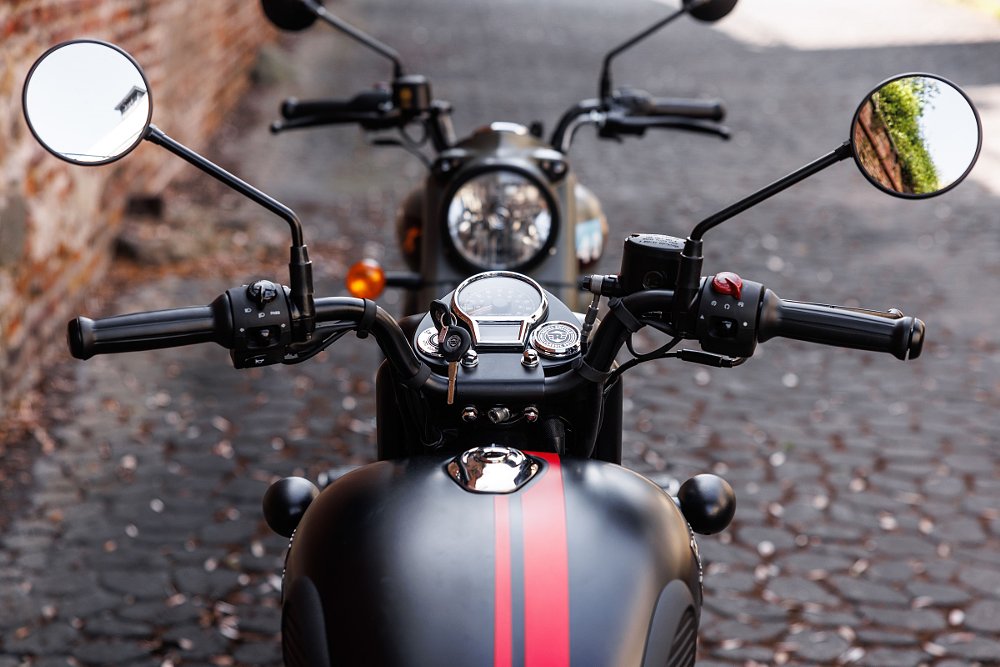
While 430 pounds is certainly not light for a thumper of this displacement, handling does not feel heavy or sluggish. That's no doubt helped by the weight being fairly low, the appropriately wide handlebar and the relatively narrow tires, a 140-section, 17-inch rear and a 100-section, 19-inch front. The riding position is perfectly neutral, which also made maneuvering through the city easier for me. With a seat height just under 32 inches, I was able to get both feet down easily (I'm five feet, 11 inches tall with a 32-inch inseam), but the only ergonomic glitch I had was that I sometimes caught my ankle on the footpeg at stops. One of the accessories on some of the test bikes was a footpeg even larger than the generously sized stock part, and I don't think I'd opt for that.
As mentioned before, the coastal plains didn't offer many curves to see how the Classic 350 handles a twisty road. But my limited impressions are that the Classic 350 held its line well through sweeping turns and the handling was predictable. The suspension felt on the firm side for me, riding solo at 175 pounds plus gear. The only adjustment is rear preload and it was set at the minimum of six positions. The firmness worked well through the few smooth curves we found but the suspension felt a little harsh over the worst bumps. It's a trade-off.
The word that kept coming to mind was "solid," which is appropriate for an all-metal bike like this one.
One area where I was impressed was the shift action of the transmission. Despite the fact that the shift lever was adjusted too low for me to get the toe of my boot fully underneath it, I never missed a shift. At first, I thought I'd try to dig out the tool kit and adjust it at a stop, but it worked so well I didn't bother.
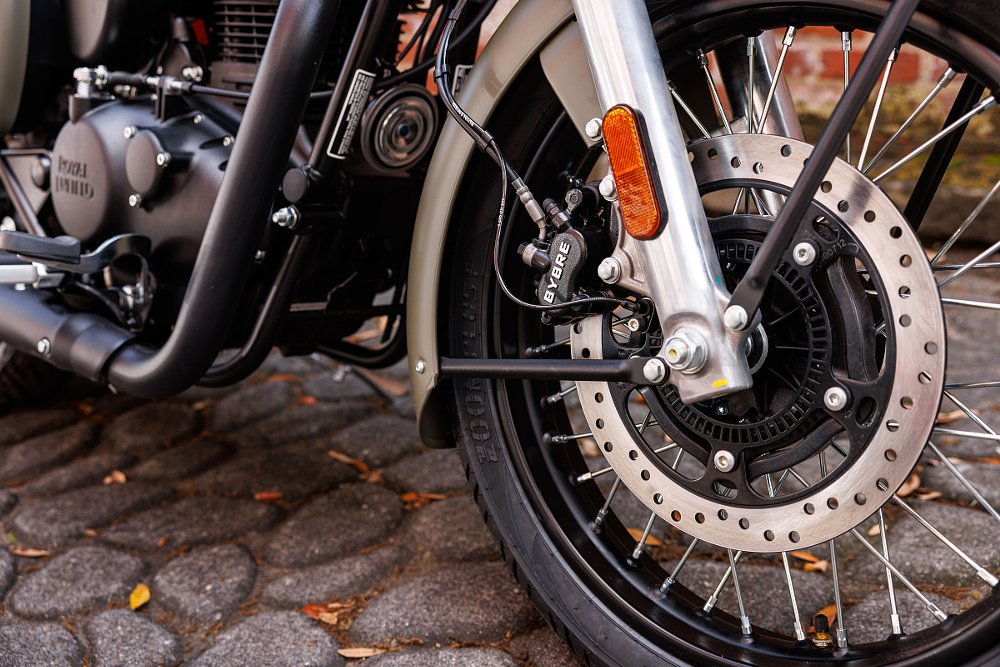
The disc brakes front and rear use Bybre calipers and my usual two-finger squeeze worked fine with the front brake. The pedal for the rear brake is larger than usual and the brake was powerful, though I couldn't modulate it very well. At a rest break, I found a patch of gravel and tested the rear ABS. It let the tire lock for a fraction of a second before doing its job. For obvious reasons, such as not wanting to be hated (or sued) by my fellow motorcycle writers, I didn't try to test the ABS on pavement while riding in close formation with a pack of a dozen other Classic 350s. Such are the limitations of press launch evalutions, my readers.
Another limitation of such a group ride directly impinged on the one thing I most wanted to know. Is the Classic 350 capable of U.S. highway speeds? That's the one metric that I thought might determine whether it could be a motorcycle I'd recommend for all-around use or whether it would be limited to urban and recreational purposes. Getting back to my original point, if it can't keep up with traffic, then it's a limited-use show pony, not a work horse.
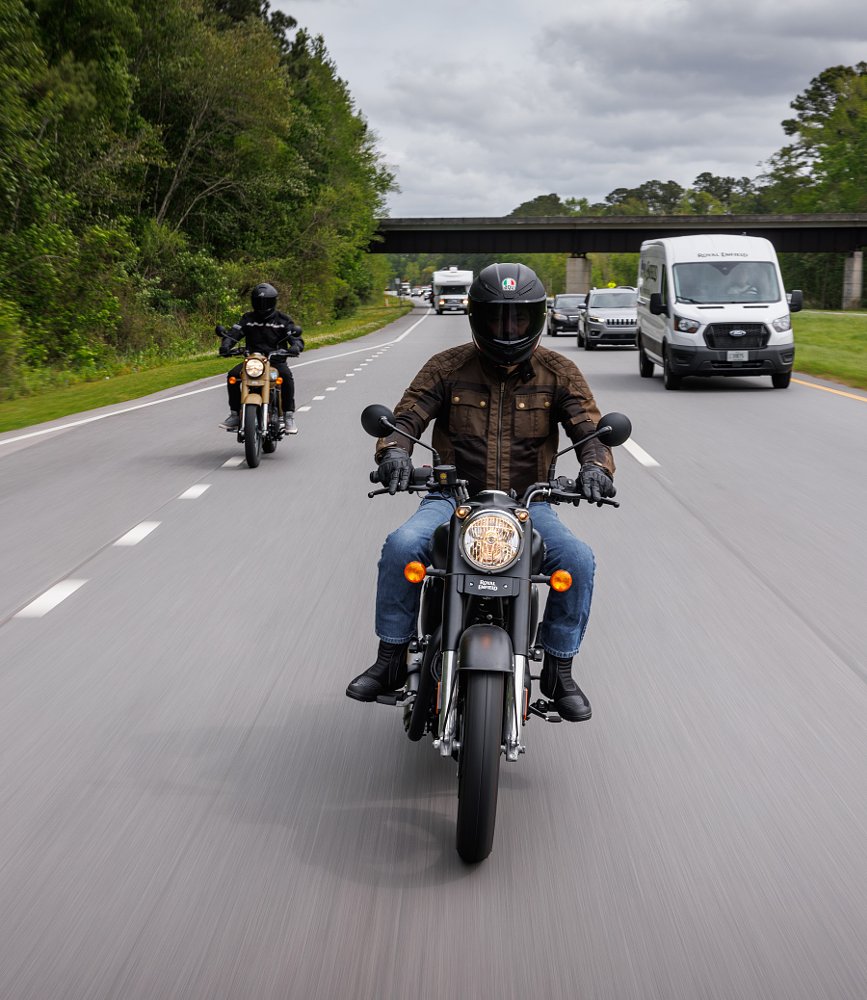
The lack of a tach also meant I often hit the rev limiter when trying to get up to highway speeds quickly. Andy had the same issue when he tested the Meteor. I was still able to pull away from stop lights more quickly than surrounding traffic, including the impatient guy in the lifted pickup in the lane beside me who floored it when the light turned green, creating a lot of sound and fury signifying not much forward momentum, while I accelerated normally and kept pace with him.
Then, despite the limitations of the group ride, I got my chance. Separated from the rest by a stop light, I had open highway in front of me to catch up. The Classic 350 showed an indicated 73 mph as I rejoined the group. It would only hold that speed in fourth gear, not fifth, which is better for cruising. I'm pretty sure there was more speed left, but not a lot.
Bottom line: You can ride the Classic 350 at U.S. highway speeds, maintaining 65 mph without undue stress, but you don't have a lot in reserve. Is that enough to make the motorcycle the practical, do-it-all transportation option I'd want it to be? In part, it may depend on the traffic conditions and driving patterns where you live. Plus your own personal standards. Decide accordingly.
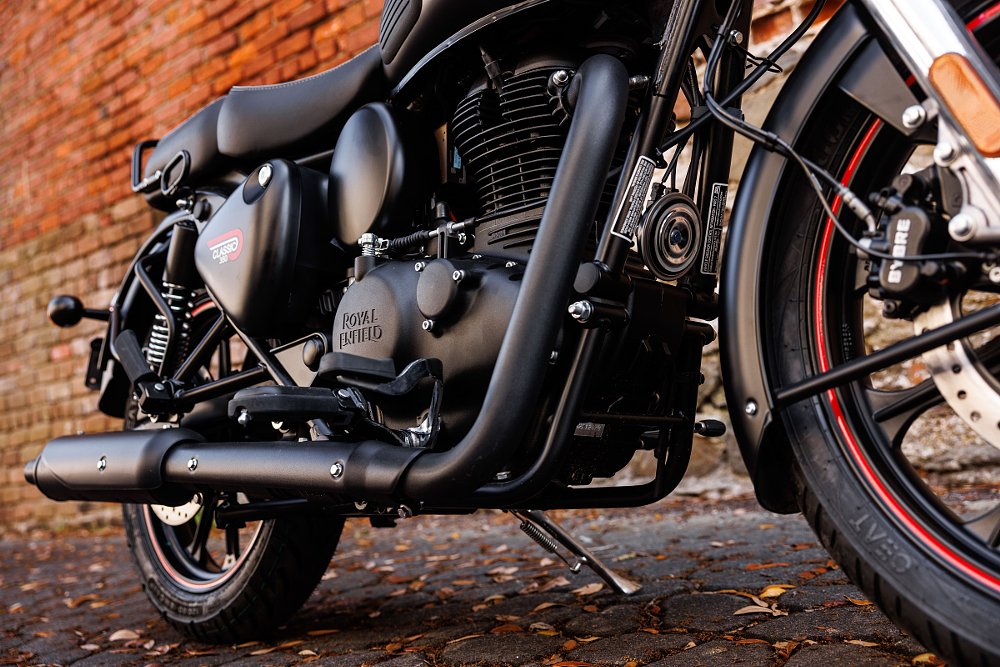
Who's the Classic 350 for?
Given its similarity to the Meteor 350, I asked Ramaswamy how Royal Enfield sees the two bikes fitting into the U.S. motorcycle landscape.
"We believe they are different customers," he said. "It's the same powertrain but if you look at the category of bike, they're different."
Ramaswamy believes new riders will be more attracted to the Meteor, with features like the Tripper navigation pod. The Classic 350 will appeal to riders who want a simpler machine, maybe experienced riders who know about the model's long history. In the United States, Royal Enfields are often sold to riders who have decided to downsize.
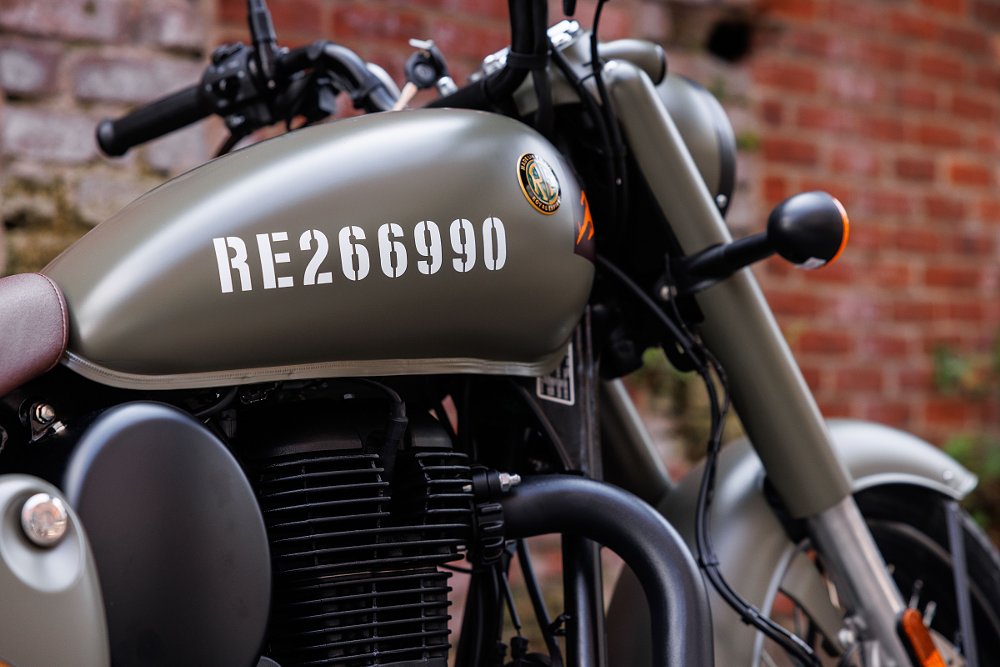
I can see the Classic 350 being very appealing to experienced riders who want to enjoy a simpler riding experience without giving up features like fuel injection and ABS. It could play that role as a second (or third or fourth) machine or maybe as a sole machine for a rider in the downsizing phase.
But more important is the question of whether the Classic 350 would make a good first motorcycle for a new rider, because new riders are the future, not guys like me who have more gray in our beards than Harley-Davidson has gray paint in its lineup. And in that case, I ended up with the conclusion that the Classic 350 would make a good first bike and yes, it probably would do everything a new rider wants to do. It would be a little challenged on some highway commutes and long trips would involve some patience, but it's capable enough.
And consider the alternatives. Remember when new, young riders were buying up all the old 1970s UJMs? A Classic 350 provides a similarly retro look with far better features and reliability and, given the prices of used motorcycles these days, doesn't even cost much more. While I usually advise new riders to buy a used motorcycle as their first ride, if they are set on retro looks, a new Classic 350 would be a far better choice than a vintage bike with all its unknowns and potential problems.
As for other new bikes, I immediately thought of the Chinese-built Benelli TNT 300 we had a few years ago that Lemmy reviewed and Brandon bravely took on a road trip. I rode the Benelli for a weekend and despite having a liquid-cooled twin for an engine, it wasn't much faster than the Classic 350. It was just as heavy, the gearbox wasn't nearly as good and overall quality felt lower. I would clearly choose the Royal Enfield.
So does the Classic 350 meet my standard of earning its keep by being a practical and useful transportation machine and being more than just a fun ride that oozes nostalgia? I'd say it's a qualified "yes." If your use case involves a 20-mile commute on major freeways near urban areas where most of the drivers around you are regularly topping 70 or 80 mph, then you might feel uncomfortably outgunned. But I realize that's not most U.S. motorcyclists.
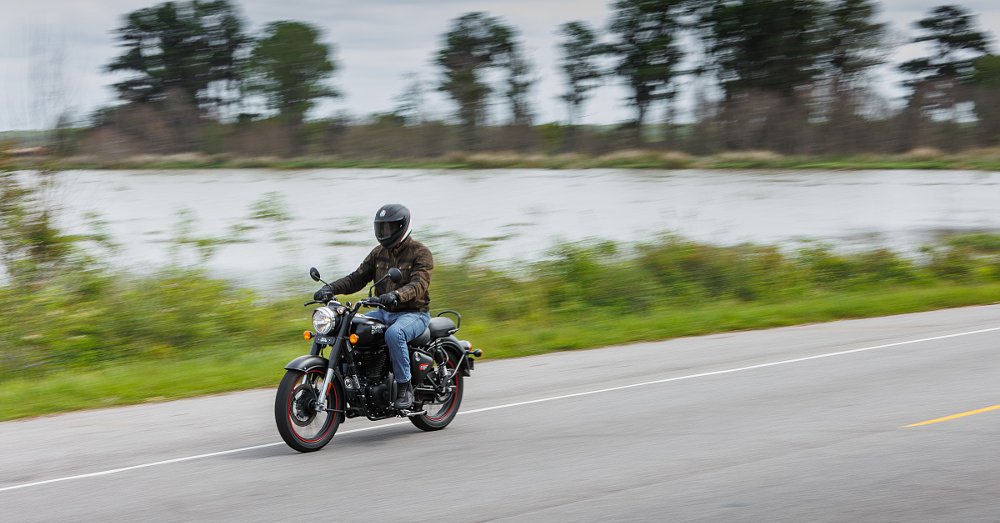
I think the Classic 350 will be a good first motorcycle for some new riders who like the style and a good addition to the garage for experienced riders who want a riding experience they remember from the past, but without points or carburetors or 40-year-old electrical systems. And I think they'll find it feels like a real motorcycle.
| 2022 Royal Enfield Classic 350 | |
|---|---|
| Price (MSRP) | $4,499 to $4,699, depending on color |
| Engine | 349 cc, air-cooled, two-valve vertical single |
|
Transmission, final drive |
Five-speed, chain |
| Claimed horsepower | 20.2 @ 6,100 rpm |
| Claimed torque | 19.9 foot-pounds @ 4,000 rpm |
| Frame | Twin downtube steel spine frame |
| Front suspension | 41 mm fork, 5.1 inches of travel |
| Rear suspension | Dual shocks adjustable for preload |
| Front brake | Single two-piston Bybre caliper, 300 mm disc with ABS |
| Rear brake | Single-piston Bybre caliper, 270 mm disc with ABS |
| Rake | 26.7 degrees |
| Wheelbase | 54.7 inches |
| Seat height | 31.7 inches |
| Fuel capacity | 3.43 gallons |
| Tires | CEAT Zoom Plus 100/90-19 front, 140/70-17 rear |
| Claimed wet weight | 430 pounds (90 percent fuel and oil) |
| Available | Now (some models) |
| Warranty | 36 months |
| More info | royalenfield.com |




